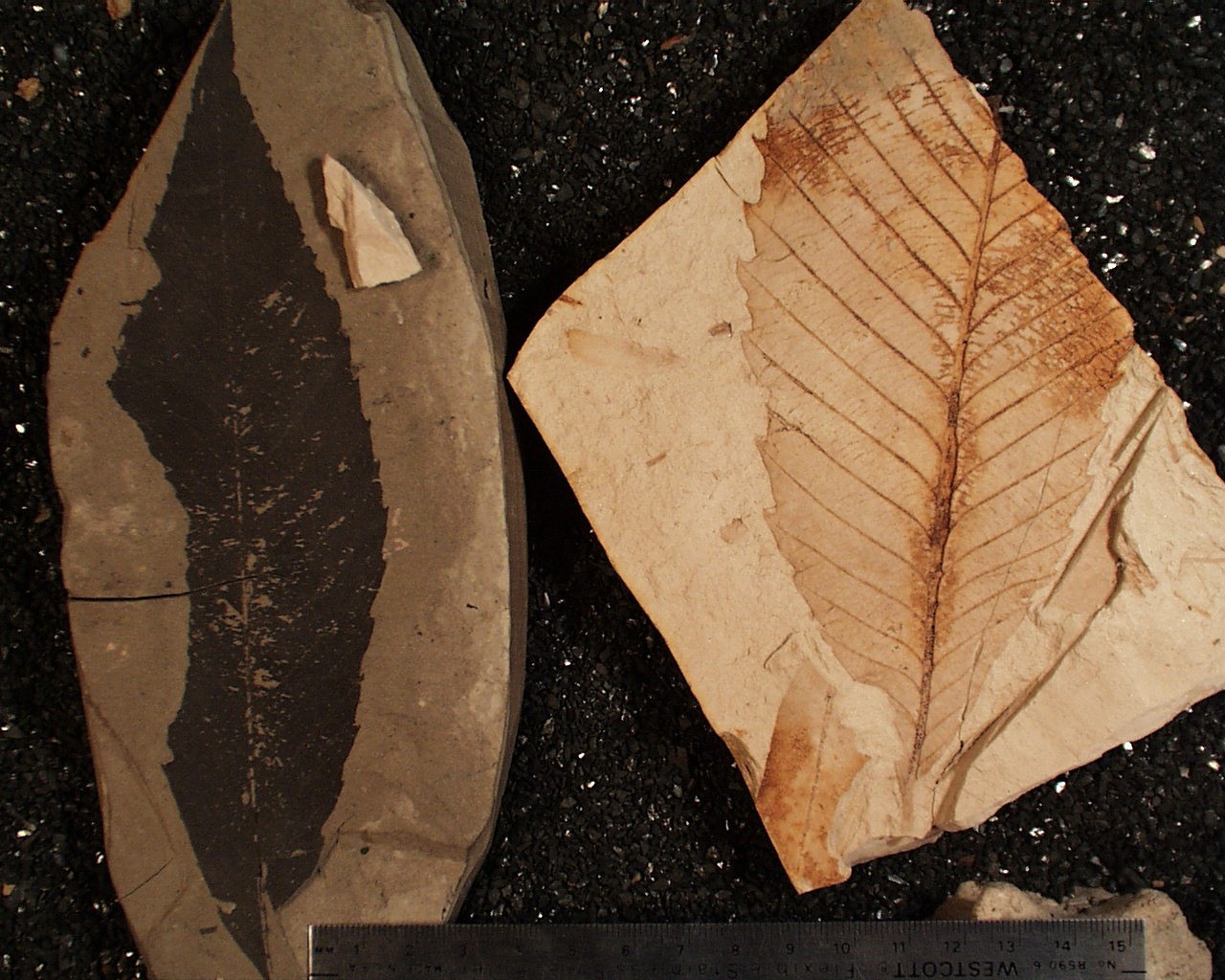 |
| Chestnuts from Clarkia William C. Rember, University of Idaho |
Formation: Clarkia Formation
Age: Miocene (15 Ma)
While the Great Plains began to take on a modern appearance at least as early as the beginning of the Miocene, the response of vegetation to changing climate was somewhat more complex elsewhere. Around 16 million years ago, global climate warmed once more in an event known as the Mid-Miocene Climatic Optimum (or MMCO), after which it would steadily cool, culminating millions of years later in the Pleistocene Ice Ages. During this final burst of warmth before the protracted cool of the Late Miocene and beyond, parts of the world saw forests reclaim land that had previously been dominated by open woodlands, savannahs, and grasslands. This was certainly the case in the Northwest, where several floras show a flourishing of trees, with none doing so more spectacularly than the Clarkia Flora of northern Idaho. The fossils uncovered from the site - including Metasequoia, beeches, maples, and walnuts - indicate a climate comparable to that of the older Bridge Creek Flora and to the modern Southeast US and temperate Asia. While the plants of Clarkia may tell a familiar taxonomic and environmental story, their quality of preservation is unique. Fossils in the lower units of the site were entombed in an anoxic environment, and this lack of oxygen has preserved not just details of their anatomy, but actual organic tissue. This means that, before being exposed to oxygen, many of the leaves retain their original colors. More importantly, molecular biology and paleontology generally exist in two very separate worlds, but Clarkia fossils allow biochemical and genetic studies that would be impossible at other localities. Being able to study paleobiology on both a micro- and macroscopic scale is rare in general, and almost unheard of for fossils as old as 15 million years, making Clarkia stand out even in a region known for its fossil floras.
Visit: The site used to be open to private collecting for a fee, but all recent searches for it lead back to the Fossil Bowl dirt bike trackway in Clarkia. I confess to a sense of deep foreboding about the condition of this internationally important locality today.
Fossils: Information about the location of Clarkia fossils is as ephemeral as information about the site itself. The original collections were stored in the UI College of Mines Museum. The College of Mines no longer exists, and the department it was subsumed into provides no hint as to where the fossils are currently stored.
Is there a relevant book full of gorgeous fossil photos that I can gift to a paleontologically-minded friend?: Given the inexplicable obscurity into which the site seems to have sunk, it probably shouldn't surprise you that there isn't.
This post is part of my 2015 Paleontology Advent Calendar, a series of vignettes on lagerstätten - sites of exceptional fossil preservation - that document changes in climate and environments through the Cenozoic. You can see the other posts here.
No comments:
Post a Comment